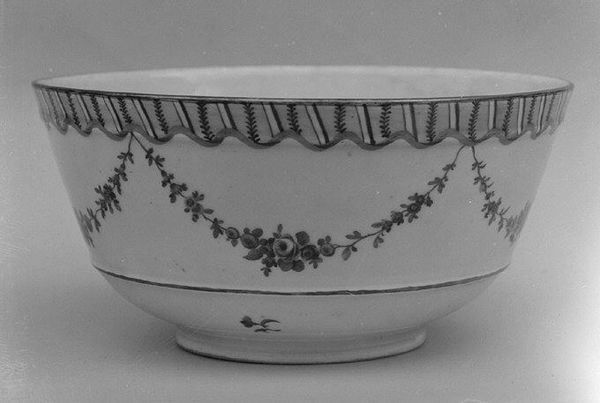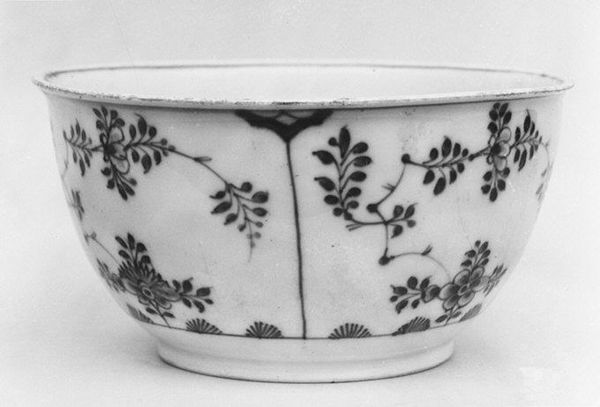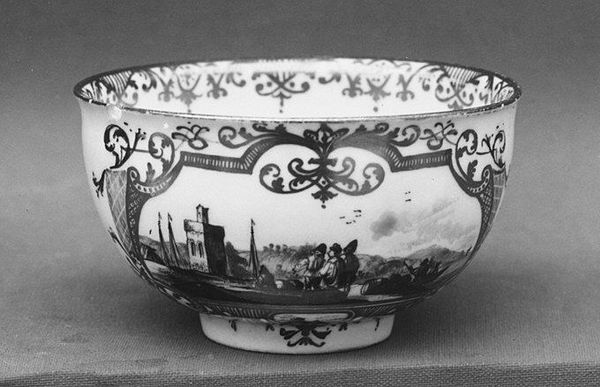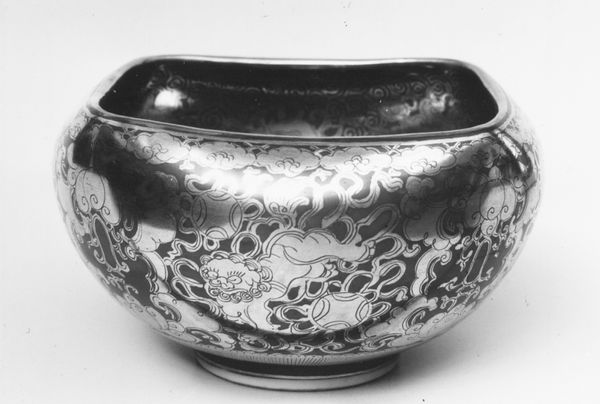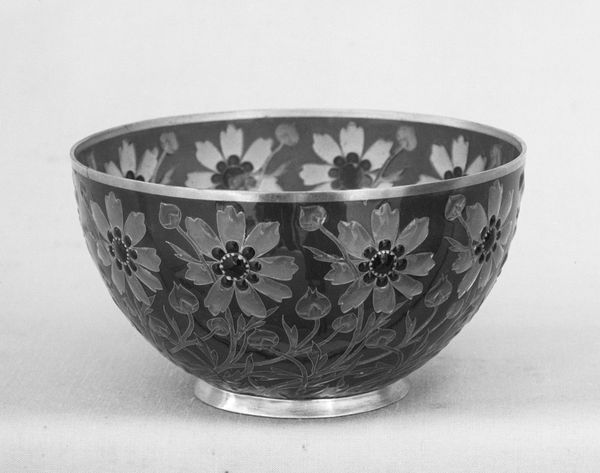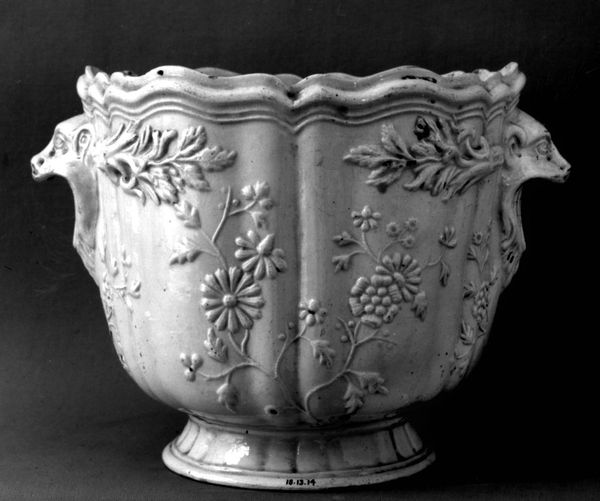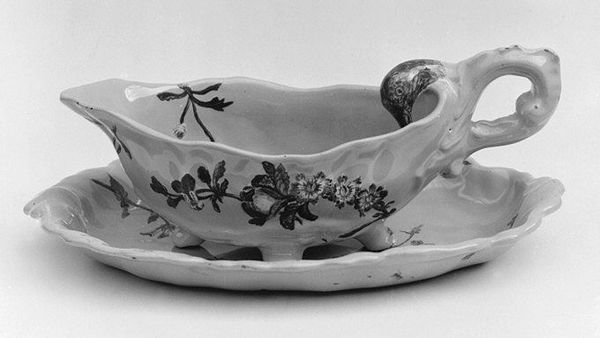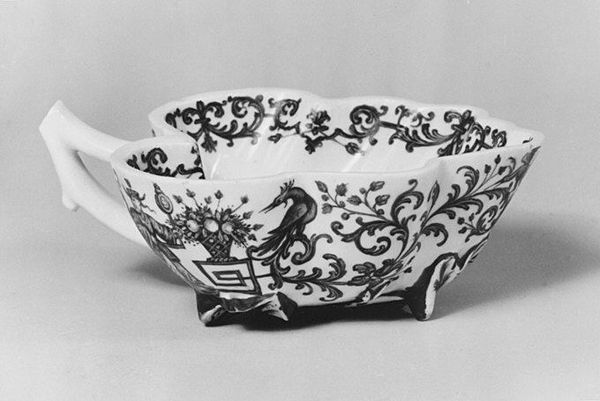
ceramic, porcelain, sculpture
#
sculpture
#
ceramic
#
porcelain
#
sculpture
#
decorative-art
Dimensions: Diameter: 2 15/16 in. (7.5 cm)
Copyright: Public Domain
Curator: It seems like a vessel for dreams… a sort of contemplative little universe. I’d like to hear more. Editor: We’re looking at a cup from a larger service, dating back to 1735-1745. It’s attributed to Cornelis Pronk and is currently housed here at the Metropolitan Museum of Art. It's rendered in ceramic, specifically porcelain. Curator: Cornelis Pronk, of course! And look at how this decorative object embodies so many complex intersectional relationships within its historical and social context. The tea trade, colonial power dynamics, the rise of mercantile exchange… it’s all right here! The material itself, porcelain, signifies status, global exchange, and, frankly, exploitation. Editor: It's so ornate for something to sip from. I almost wonder if it's intended for something other than consuming liquids. Do you suppose it might have held something like candies or perfumed waters? I imagine a lady of the court handling this, dabbing a handkerchief... Curator: Precisely! That gets to the heart of performativity within a social setting! Consumption—both literal and metaphorical—shaped identities and expressed gendered expectations. Consider the feminine associations of tea ceremonies... this cup becomes a site of constructing and solidifying class and gender roles within an increasingly globalized world. Editor: So, like, this unassuming object is actually complicit? Like some sort of quiet conspirator in an outdated system of power? Curator: It's not about culpability. Rather, this object exemplifies how material culture participates in larger systems. Examining the labor conditions involved in its manufacture, the environmental impact of resource extraction, the patterns of unequal exchange that allowed for its creation… we understand how it mirrors existing societal structures. It encourages critical reflections. Editor: Looking at the scalloped edging, the way they evenly descend around the inside rim… I guess you could argue the pattern looks pretty severe. Like…teeth, almost? Like it's a creature that might bite you if you don't handle it appropriately. Maybe that severe look reinforces what you were saying. Curator: The design isn’t just aesthetically pleasing. It signifies, perhaps unwittingly, the ways power embeds itself in the everyday, requiring consistent critical examination. Editor: Makes you think about what our everyday objects are telegraphing. Well, thanks for this somewhat unsettling analysis. I’ll never look at my coffee cup the same way. Curator: And hopefully, that shift in perspective initiates conversations leading to critical consciousness. My pleasure.
Comments
No comments
Be the first to comment and join the conversation on the ultimate creative platform.

